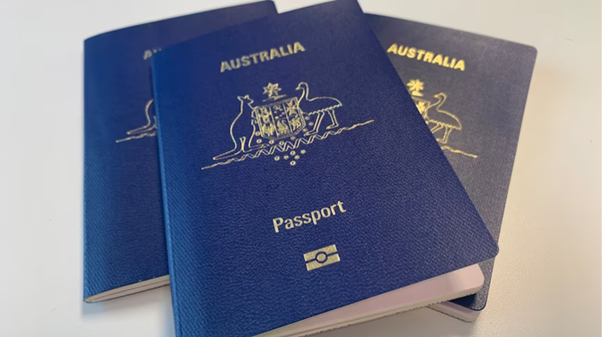
For generations, the satisfying ‘thud’ of a passport stamp has been the quintessential marker of international travel. Each stamp, a colorful badge of honor, meticulously documenting journeys and adventures across borders. Passport pages, adorned with these inky imprints, became tangible diaries of global exploration. However, as we rapidly advance into a digital age, this nostalgic tradition is facing a significant transformation, particularly within the European Union. Starting November 10, 2024, Europe is embarking on a new chapter in border management, phasing out the physical passport stamp in favor of a sophisticated digital system. This move, while signaling the end of an era for some travelers, promises to revolutionize border control, making it faster, more secure, and significantly more efficient.
The End of an Era: Why Ditch the Stamp?
The passport stamp, a relic from a less technologically advanced age, has served its purpose for decades. It’s been a simple, visual confirmation of entry and exit, aiding border officials in tracking travelers’ movements and enforcing immigration regulations. However, in today’s world of ever-increasing global mobility and sophisticated security threats, the limitations of manual stamping have become increasingly apparent.
Firstly, the sheer volume of international travel has placed immense pressure on border infrastructure. Long queues at passport control are a common frustration, fueled partly by the time-consuming process of manually stamping each passport. Secondly, while seemingly straightforward, manual stamping is prone to human error. Stamps can be missed, applied incorrectly, or even forged. Furthermore, the data collected from stamps is inherently limited and difficult to aggregate and analyze for broader security and immigration management purposes.
The digital shift is not about erasing travel memories, but about modernizing and streamlining border processes to meet the demands of the 21st century. By moving away from ink and paper, Europe aims to enhance security protocols, reduce congestion at borders, and leverage technology for smarter, more data-driven immigration management. This evolution is not unique to Europe; nations worldwide are exploring and implementing digital solutions to optimize border control and secure national boundaries in an increasingly interconnected world.
Enter the Entry-Exit System (EES): Biometrics at the Border
The cornerstone of Europe’s digital border revolution is the Entry-Exit System (EES). This system represents a paradigm shift from manual, stamp-based processing to an automated, biometric-driven approach. Starting November 2024, travelers from non-EU countries will experience a fundamentally different border crossing procedure.
Instead of presenting their passports for stamping, first-time EES users and those whose biometric data is not already in the system will have their biometric identifiers – facial image and fingerprints – captured at the border. This data, along with passport information, will be securely recorded in the central EES database each time a traveler enters or exits the Schengen Area. Subsequent entries within a certain timeframe may only require facial recognition or fingerprint verification, further expediting the process for frequent travelers.
This biometric data capture is crucial for several reasons. Firstly, it establishes a clear and irrefutable record of each entry and exit, significantly reducing overstaying – a key concern for immigration authorities. Secondly, it enhances security by making it more difficult for individuals to use fraudulent or multiple identities. The system is designed to interoperable with other EU and international databases, allowing for more efficient identification of potential security risks and individuals of interest to law enforcement. The EES marks Europe’s commitment to leveraging cutting-edge technology to bolster border security while facilitating legitimate travel.
ETIAS: The Pre-Travel Authorization Layer
Building upon the foundation laid by the EES is the European Travel Information and Authorisation System (ETIAS), slated to become mandatory for visa-exempt non-EU nationals in the first half of 2025. ETIAS introduces a pre-travel authorization requirement, similar to the ESTA in the United States or the ETA in the UK. For a nominal fee of €7 (approximately A$11.50), travelers from eligible countries will need to apply online for an ETIAS authorization prior to their journey to Europe. This authorization, valid for three years or until the passport expires, whichever comes first, allows for multiple entries within its validity period.
ETIAS is not a visa; it’s a travel authorization specifically designed for visa-exempt nationals. The online application process is expected to be straightforward, taking only a few minutes to complete for most applicants. The system will automatically cross-reference applicant data against various security databases to identify any potential risks before travel commences. This pre-screening process adds another layer of security, allowing authorities to identify and address potential threats proactively, rather than at the border itself.
The combination of EES and ETIAS represents a comprehensive, multi-layered approach to border management. ETIAS acts as a proactive filter, screening travelers before they even reach Europe’s borders, while EES ensures efficient and secure processing at the point of entry and exit. Together, they aim to create a more robust and streamlined border management framework for the EU.
Benefits Beyond the Stamp: Efficiency, Security, and Data-Driven Insights
The shift to digital border control offers a multitude of benefits far exceeding the simple replacement of a physical stamp. Beyond speed and efficiency at border checkpoints, the digital systems provide significant advantages in terms of security, data management, and resource optimization.
- Reduced Wait Times: Automated biometric checks are significantly faster than manual stamping and visual passport inspection, leading to shorter queues and a smoother travel experience, especially during peak travel seasons.
- Enhanced Security: Biometric data and database interoperability make it considerably more difficult for individuals to bypass immigration controls using fraudulent documents or multiple identities. Pre-screening through ETIAS further strengthens security.
- Combating Overstaying: The EES accurately records entry and exit dates, significantly improving the detection and prevention of overstaying, which is a key element in managing legal migration and security.
- Data-Driven Immigration Policies: The wealth of data collected by EES and ETIAS provides valuable insights into travel patterns, demographics, and potential risks. This data can be leveraged to develop more informed and effective immigration and border security policies.
- Resource Optimization: Automated systems can free up border control officers from routine tasks, allowing them to focus on more complex cases, risk assessment, and traveler assistance. This leads to more efficient allocation of resources and improved operational effectiveness.
- Future-Proofing Border Management: Digital systems are scalable and adaptable to evolving security threats and increasing travel volumes. They provide a more sustainable and future-proof solution compared to traditional manual processes.
Concerns and Considerations: Navigating the Digital Transition
While the benefits of digital border control are substantial, the transition is not without its challenges and concerns. It’s crucial to address these to ensure a smooth and equitable implementation of the new systems.
- Data Privacy and Security: The collection and storage of biometric data raise legitimate privacy concerns. Robust data protection measures, strict access controls, and transparent data handling policies are paramount to maintain public trust and comply with data protection regulations such as GDPR.
- Technological Infrastructure and Implementation: Implementing complex digital systems across multiple borders requires significant investment in technology infrastructure, staff training, and ongoing maintenance. Ensuring interoperability between different national systems and databases is also a complex undertaking.
- Digital Divide and Accessibility: The reliance on online systems like ETIAS might pose challenges for travelers with limited digital literacy or access to technology. Provisions must be made to assist such individuals and ensure equitable access to travel authorization.
- Loss of Tangible Travel Mementos: For some travelers, passport stamps are cherished souvenirs of their journeys. The transition to digital systems inevitably means the loss of this tangible aspect of travel documentation, which may evoke a sense of nostalgia and disappointment for some.
- Potential System Glitches and Contingency Plans: Like any technology, digital border control systems are susceptible to technical glitches. Robust contingency plans and manual backup procedures need to be in place to ensure border operations can continue smoothly in case of system failures.
These concerns are being actively addressed by the EU and member states through careful system design, rigorous testing, public awareness campaigns, and ongoing refinement of procedures. Transparency and open communication with travelers are essential to foster understanding and acceptance of these changes.
The Global Shift: Digital Borders as the Future of Travel
Europe’s move towards digital border control is not an isolated event, but rather a part of a broader global trend. Countries worldwide are recognizing the limitations of traditional paper-based systems and exploring digital solutions to enhance border security and streamline travel processes. From automated passport control kiosks at airports to e-visas and digital travel authorizations, the technology-driven transformation of border management is gaining momentum.
| Feature | Passport Stamps (Traditional) | Digital Border Control (EES & ETIAS) |
|---|---|---|
| Speed & Efficiency | Relatively slow, manual process; can cause queues. | Fast, automated biometric checks; reduces wait times. |
| Security | Limited security features, prone to human error and forgery. | Enhanced security through biometrics, pre-screening, and database interoperability. |
| Data Management | Data collection limited, difficult to aggregate and analyze. | Comprehensive data capture, enabling data-driven policy making and risk assessment. |
| Overstay Detection | Less effective in tracking and preventing overstaying. | Highly effective in tracking entries and exits, significantly reducing overstaying. |
| Traveler Experience | Nostalgic appeal for some, but can be time-consuming and inconvenient. | Streamlined and faster process; enhanced convenience for frequent travelers. |
| Cost | Low direct cost, but high indirect costs due to inefficiencies and manual processing. | Initial investment in infrastructure, but potential for long-term cost savings through efficiency gains. ETIAS introduces a small fee. |
The adoption of digital border control systems is driven by a confluence of factors, including increasing global travel, heightened security concerns, and the continuous advancement of technology. As digital identity solutions mature and become more widely accepted, we can expect to see further evolution in how borders are managed, potentially leading to even more seamless and secure international travel experiences in the future.
Conclusion: Embracing the Future of Travel
The phasing out of passport stamps in Europe marks a significant shift in how we perceive and experience international travel. While the nostalgic charm of the ink stamp may be missed by some, the benefits of digital border control are undeniable. The Entry-Exit System and the upcoming ETIAS represent a bold step towards creating a more efficient, secure, and data-driven approach to managing borders in the 21st century. As technology continues to reshape our world, embracing these digital advancements is crucial for facilitating safe and seamless travel while safeguarding national security. Say goodbye to passport stamps, and hello to the future of travel – a future that is increasingly digital, secure, and, hopefully, even more efficient.

